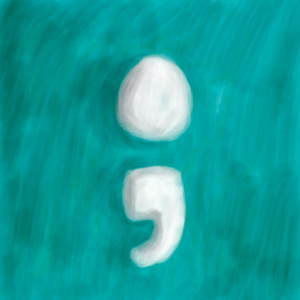Do you know your blog reading level?
Your blog reading level is the metric that tells you how easy or difficult your blog is to read. It can be increased or decreased by punctuation, wordiness, character count, and choice of words.
Writing at a simple blog reading level isn’t to insult anyone’s intelligence, it simply helps make your point quickly, efficiently, and effectively. In fact, an eighth grade reading level is recommended for most blogs. There’s room for style in writing, but substance is far more important.
 Even the great Harvard Business Review finds itself in the junior high and high school zone for stretches of its website. Like you, the magazine is conveying big industry ideas and trends to the biggest possible audience. Meanwhile, genius-level blogs, according to Mental Floss, include Ars Technica and Damn Interesting!, but their audiences are far different than yours – they’re more for entertainment purposes.
Even the great Harvard Business Review finds itself in the junior high and high school zone for stretches of its website. Like you, the magazine is conveying big industry ideas and trends to the biggest possible audience. Meanwhile, genius-level blogs, according to Mental Floss, include Ars Technica and Damn Interesting!, but their audiences are far different than yours – they’re more for entertainment purposes.
Are you writing for CEOs? Engineers? Niche retail consumers who just can’t get enough of your kitchen gadgets? Your customer personas do matter tremendously, for many reasons. One of which is determining how complicated or uncomplicated your blog writing style will be.
A related reason, is attracting the right readers – and retaining them. If you lose visitors to your business blog before you can convert them into customers, your content marketing efforts have failed. You may end up doing just that if you write content at a reading level that doesn’t resonate with your ideal readers.
Again I ask, do you know at which reading level you should blog for?
For an executive, we recommend you write at or below high school level. Engineers, maybe closer to college. Most others? Well, believe it or not, about eighth grade!
Place your posts somewhere between an elevator pitch and an essay assignment in crisp language with minimal adverbs and passive voice. Write how you speak. Be concise. Don’t assume your reader knows everything you do. Your role is to inform.
Let’s look at some ways to measure your blog reading level – the tests and the principles behind them – and to improve the quality of your posts.
Measuring Blog Reading Level: A Battery of Tests
There are lots of apps that will tell you how readable your content is.
Want to have some fun while crafting your blog posts? Go to the HemingwayApp, named for the legendary author’s clear, declarative sentences. It’s an awesome writing aid. I give you my personal guarantee that it will strengthen your work. I’ve done pretty well so far – according to the site, I could probably lose an adverb or two.
Then, when you’ve got a draft, visit Read-Able.com, JuicyStudio.com, LearnClick.com, Mancko.com, or one of another dozen online blog reading level tools and run your favorite pages and posts through the tests. You can do this all night – or at least we could!
 They’re measuring comprehension, speed, and retention, among other factors, and each of them combines several tests to arrive at a reading level. So far, for instance, this post is reading right at a ninth-grade level, according to a few of them. That’s about where we want it. We’re aiming for CEOs, marketing executives, and others like you who don’t have the time for rambling posts – you just want the facts and figures.
They’re measuring comprehension, speed, and retention, among other factors, and each of them combines several tests to arrive at a reading level. So far, for instance, this post is reading right at a ninth-grade level, according to a few of them. That’s about where we want it. We’re aiming for CEOs, marketing executives, and others like you who don’t have the time for rambling posts – you just want the facts and figures.
Other posts of ours register too high; (that semi-colon right there probably dinged me) … some, maybe a touch low. Indicators like the ones below are what give the tools their metrics. They’ll also give you an idea of what you might work on in your posts. It’s all about communication and ensuring you’re on the same page as your audience throughout the process.
Thanks to ReadabilityFormulas.com for the reference and background!
The Flesch-Kincaid Readability + Grade Tests
Right now, I’m at about 74 readability and ninth grade – again, it might not sound so impressive, but it’s the sweet spot, my friends. On the Flesch-Kincaid 1-100 Readability spectrum, 60 and over is considered “easy to read.” The tests’ touchstones are length of sentences and words. Where does your content rank? Most of the sites I link to above will break down your results.
SMOG + FOG
SMOG is a formula that analyzes 30 sentences from your text – 10 from the beginning, 10 from the middle, and 10 from the end – and dependent on number of syllables in the words that comprise them. FOG, developed by Robert Gunning, also tracks syllables. As much as it pain me, you can probably guess what I’m going to say here: the fewer the syllables, the better. But I love syllables, you say. Me, too, man. Me, too.
Cloze Test
You could make this the Mad Libs of your blog reading level measurement. Cloze omits words from your sentences and asks participants to fill them in. The idea behind this is to simultaneously measure the readability of a text along with the comprehension of the participant.
Automated Readability + Coleman-Liau Indices
The ARI and Coleman-Liau bear mentioning, especially in the age of Twitter, because they take characters into account. Like the majority of these tests, ARI and CLI results are dispensed in terms of grade level – currently, I’m at seventh- and ninth-grade levels, respectively, which is about where I’ve hovered throughout the post.
More importantly, does this post pass your test? Did you read through to the end? Was it helpful? Let us know your thoughts on blog reading level – and what grade you’re in – in the comments!











